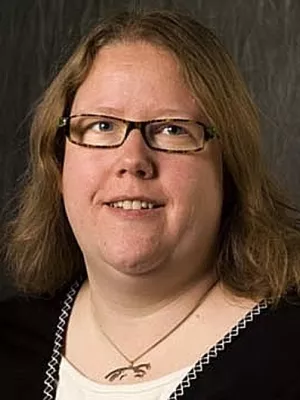
Anne Nielsen
Project coordinator

The Verijarv area, South Estonia over the last millennium: A high resolution quantitative land-cover reconstruction based on pollen and historical data
Author
Summary, in English
Integration of palynological proxies with annual lamina counting, C-14, Pb-210, Cs-137 and Am-241 radiometric dating, historical documents and old cadastral maps enabled reconstruction of changes in the cultural landscape resulting from extensive forest clearance, arable farming and slash-and-burn practices in South Estonia over the last millennium. Changes in land-cover were quantitatively reconstructed using Landscape Reconstruction Algorithm (LRA) models. These reconstructions are in accordance with historical data from the last century, while reconstructions for the late 19th century time-slice exhibit a considerably more open landscape with a higher portion of cultivated land than that recorded on maps, and possible reasons for this discrepancy are discussed. Taxa represented in the pollen spectrum with values <1% cannot be recommended in reconstructions, as standard deviations are usually larger than the mean cover estimates of the taxon in question. Pollen data and historical evidence suggest that the forest structure changed from fairly open wooded meadow type grazed forests during early periods to closed boreal forest communities typical of the area today. Maximum landscape openness was reached in the 1700s and 1800s, when almost all of the available land was cultivated or used for cattle rearing. Four different periods of landscape development have been differentiated: AD 1000 to 1600, semi-open (20-70%) landscape with increasing intensity of agriculture and openness; AD 1600 to 1870, open (>70%) landscape resulting from extensive agrarian activities including slash-and-burn agriculture; AD 1870 to 1950, cultural landscape with variable openness (70-80%) and AD 1950 to 2000, modern overgrowing semi-open (<70%) landscape. (C) 2014 Elsevier B.V. All rights reserved.
Department/s
- Quaternary Sciences
- MERGE: ModElling the Regional and Global Earth system
- BECC: Biodiversity and Ecosystem services in a Changing Climate
Publishing year
2014
Language
English
Pages
5-17
Publication/Series
Review of Palaeobotany and Palynology
Volume
207
Document type
Journal article
Publisher
Elsevier
Topic
- Geology
Keywords
- Pollen analysis
- Historical data
- Landscape reconstruction
- LRA models
- Estonia
Status
Published
ISBN/ISSN/Other
- ISSN: 0034-6667

